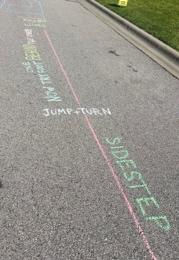Hippotherapy
- All Care Therapies

- Aug 18, 2019
- 1 min read

Hippotherapy is the use of horseback riding as a therapeutic or rehabilitative treatment.
Who Can Benefit from Hippotherapy?
Children and adults with physical, neurological, behavioral, or cognitive disabilities
Cerebral Palsy, Autism, Down Syndrome, Spinal Cord Injuries, Social/Communication delays are the most common diagnoses typically associated with participating in Hippotherapy
Benefits of Hippotherapy:
Utilizes the benefits of horseback riding and the equine environment alongside trained professionals (OT’s, PT’s, ST’s) to promote maximal therapeutic benefits for participants
Improved posture, balance, mobility, motivation, strength, coordination, and overall mood of the individual
Improves daily activities, independence, and overall quality of life
How Does it Affect Postural Control?
A horse’s gait has a three-dimensional movement (equine movement) which is similar to a human that helps one plan physical responses to the horse’s movement
Horseback riding requires subtle adjustments and positioning to maintain proper balance and posture
The horse’s gait pattern is similar to that of a human, so riding the horse facilitates normal pelvic rotation
The movement of the horse combined with the warmth of the horse may also help decrease hypertonicity and promote relaxation if the rider has spastic movements
References:
Govender, P., Barlow, C., & Ballim, S. (2016). Hippotherapy in occupational therapy practice. South African Journal Of Occupational Therapy, 46(2), 31-36. doi:10.17159/2310 3833/2016/v46n2a6
My Child at Cerebral Palsy.org. (2018). Hippotherapy. Retrieved April 3, 2018 from http://www.cerebralpalsy.org/about-cerebral-palsy/treatment/therapy/hippotherapy.
Zadnikar, M., & Kastrin, A. (2011). Effects of hippotherapy and therapeutic horseback riding on postural control or balance in children with cerebral palsy: a meta-analysis. Developmental Medicine & Child Neurology, 53(8), 684-691. doi:10.1111/j.1469 8749.2011.03951.x




Comments